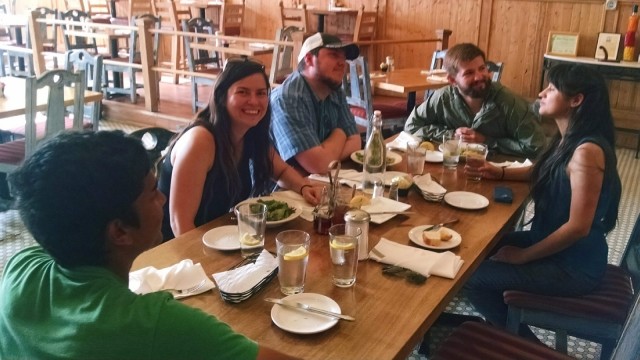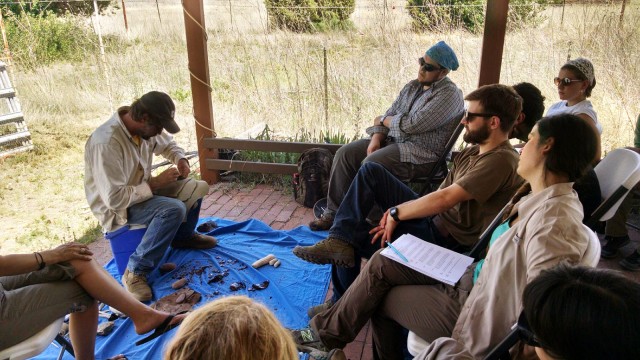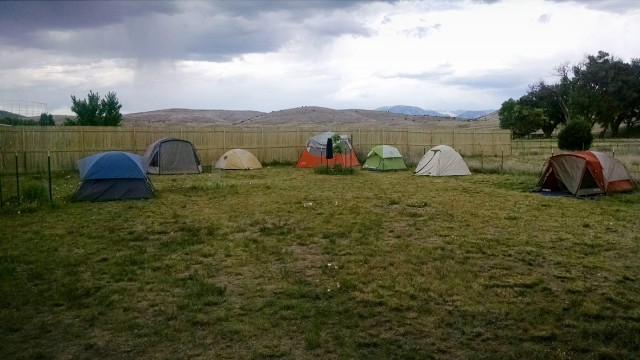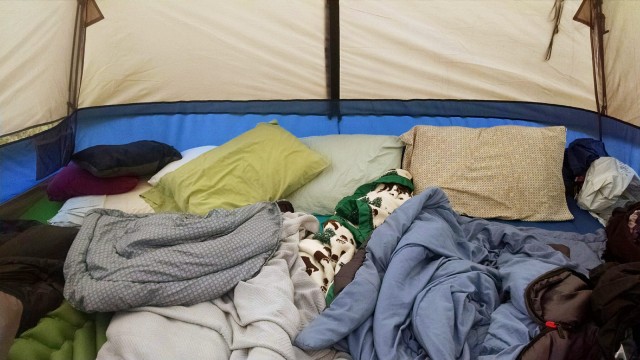- Home
- >
- Preservation Archaeology Blog
- >
- Ideologies of Inclusion
Alexander Ballesteros, Northern Arizona University
The Southwest United States has a long history of cultural coalescence, and as a fourth-generation Arizonan, I have a firsthand glimpse at the history of group aggregations in the region. Some historic instances of cultural coalescence in Arizona include the Spanish conquest of indigenous populations and various migrations into the Southwest during the era of manifest destiny. Migrants escaping the Jim Crow South or current immigrants leaving their homelands searching for a better life here are more recent examples of groups aggregating into the region.
Our research during the 2015 Preservation Archaeology Field School focuses on prehistoric blending of cultures from northeast Arizona with different groups in southern Arizona and New Mexico. The fusion of cultures is seen in the archaeological record through Roosevelt Red Ware ceramics and other material signs of the Salado tradition. Archaeologists such as Jeff Clark suggest Salado cosmology worked to peacefully integrate groups with different cultural traditions, and it has been linked to the spread of Kayenta groups into the region.

The theory that a new ideology could be used for successful integration of new and old residents in a region is extremely intriguing to me. I myself am a great example of the cultural mixtures of the Columbian Exchange. My father is a Chicano of mixed Spanish and indigenous heritage, while my mother comes from a long line of European immigrants into the East Coast. Additionally, my experience as a lifelong Arizonan allows me a great view of the aggregation of various communities within the Southwest. Arizona has a mixture of groups such as Diné and Hopi, Latinos, Anglo Americans, African Americans, Asian Americans, and a large number of newly arrived immigrant communities.
I am drawn to the idea of cultural coalescence because while I planned for my experience at Mule Creek, I was extremely nervous to leave home for an unpredictable journey to southwest New Mexico with a group of strangers. Somewhat like the Kayenta people before me, I left my northern Arizona home to begin a new chapter of my life in the Upper Gila region of New Mexico. I cannot profess to know how they must have felt, but I can begin to understand what they might have thought or worried about.
One of the things I worried about most was what interactions with other students would be like. However, almost instantly the small group of students and instructors, all from different backgrounds, became a functional community. Upon arriving at camp, various tents were set up in clusters, with the majority placed in one corner of the camp. Furthermore, after only five days of knowing each other, several camp mates and I rejected solitary sleep for a communal tent.
Within three weeks of meeting this group of individuals, I now consider many of these people close friends whom I hope to keep for life. To me the field school is like the Salado tradition: a set of ideologies shared by various people that has allowed us to form strong lifelong bonds.


